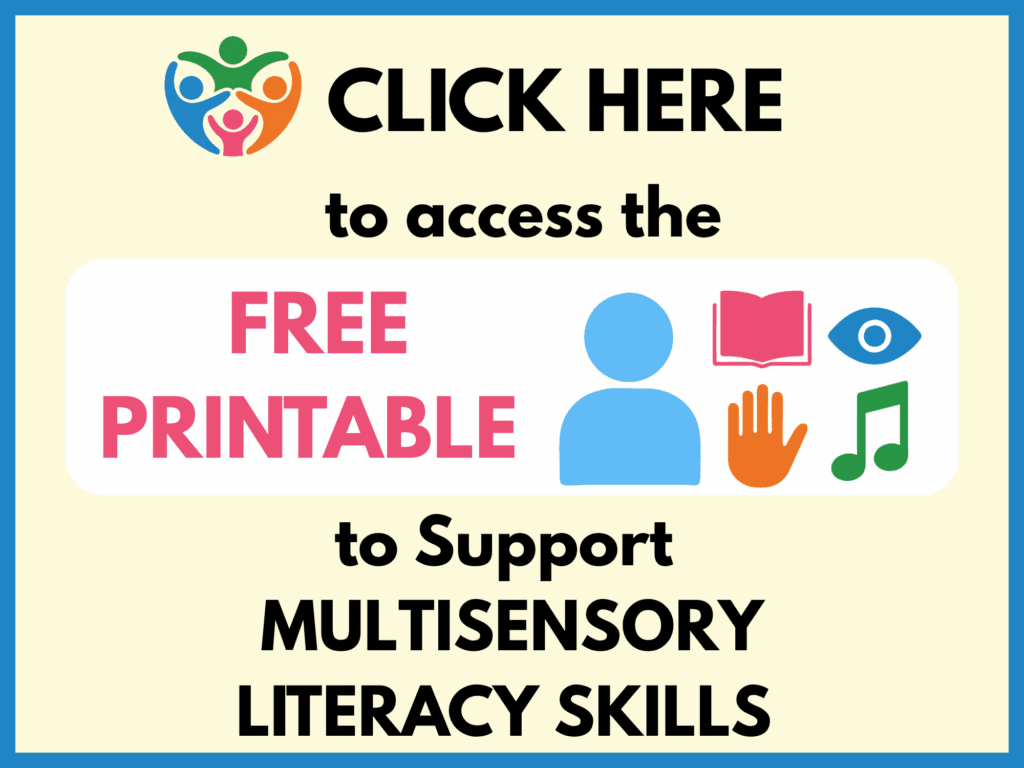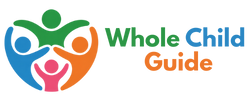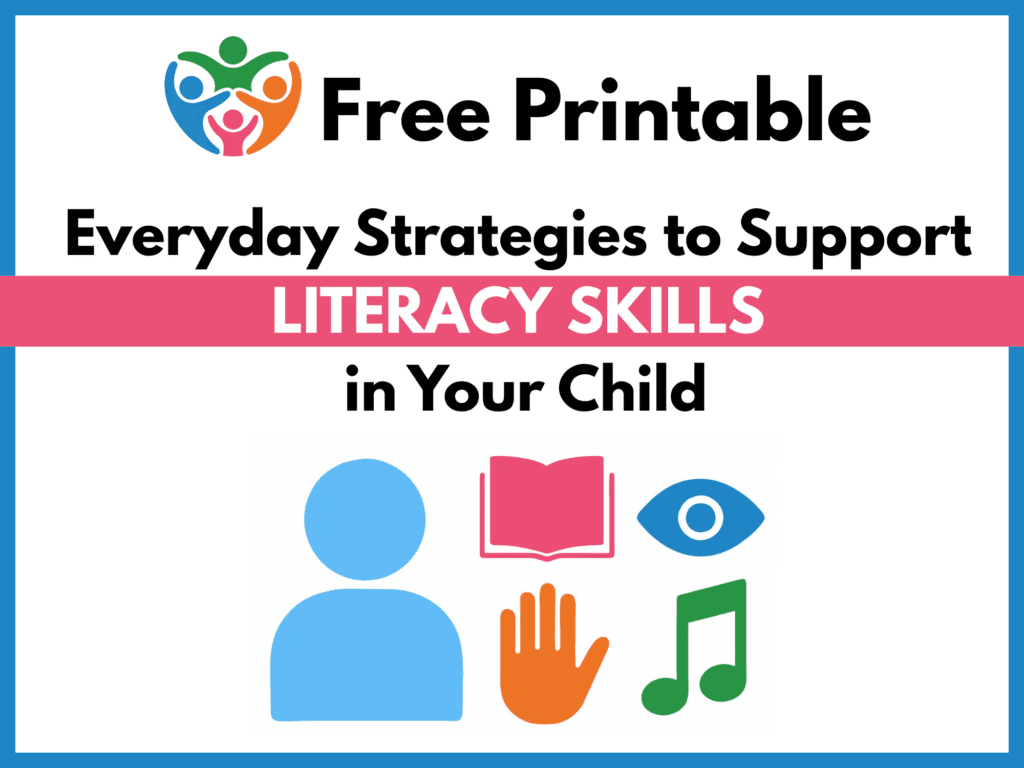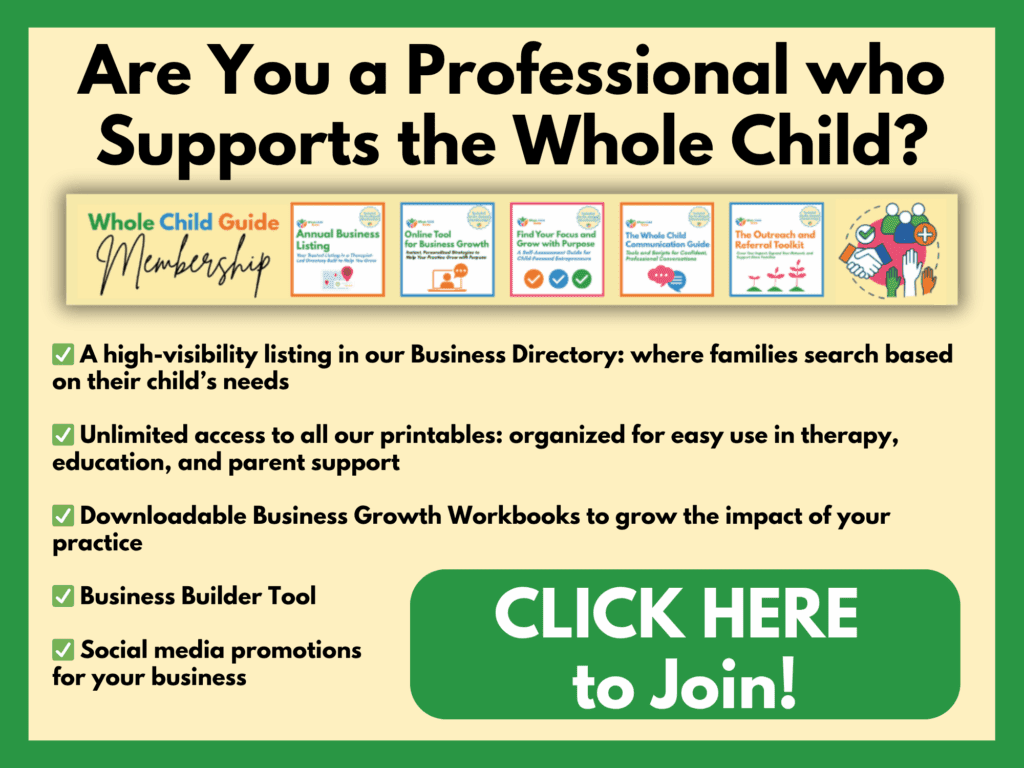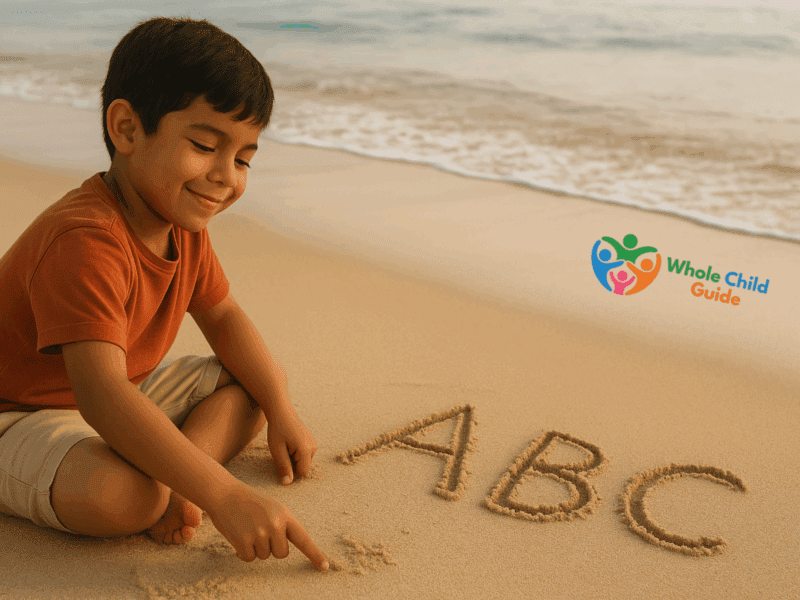
Our next resource in our series on parenting support is a topic that caregivers or educators of early learners will find interesting…we’re talking how and WHY to incorporate whole child concepts in literacy. This is an important one because if you are a trained professional, then you may recognize the impact that the whole child has on learning and cognition, based on the Pyramid of Learning. In that pyramid, we know that development builds on itself, starting with sensory processing and going from there. When it comes to challenges with reading and comprehension, it helps to take a step back and look at the whole child! But this just isn’t something that happens in schools. Learn more about whole child development and literacy and get a FREE download.
Whole Child Literacy Development
Supporting children in reading and writing goes far beyond flashcards and worksheets. Whole child literacy development recognizes that learning to read is deeply connected to a child’s movement, sensory experiences, emotional regulation, and cognitive growth. That’s why multisensory learning strategies are so powerful!
When we use multisensory learning strategies in literacy, we can tap into how kids naturally learn by seeing, hearing, touching, and moving. For children who need more support, literacy tutoring using science of reading principles offers a structured, evidence-based approach that builds strong reading foundations. In this post, we’ll explore how these approaches come together to nurture confident, capable readers.
Multisensory Learning Strategies
Foundations to Literacy in Development One thing that a specialist like a pediatric occupational therapist or physical therapist would love to tell new parents is this: Whole child development directly impacts literacy. From the moment a child begins to explore their environment through movement and play, they are building the sensory and motor systems that support future reading and writing. Supporting these systems early on sets the stage for future success.
Why Multisensory Learning Works Multisensory learning engages multiple areas of the brain by combining visual, auditory, kinesthetic, and tactile input. This is particularly effective for struggling readers, children with dyslexia, and those who learn best through hands-on exploration. Approaches like Orton-Gillingham have proven results and are grounded in the science of reading, a framework that uses evidence-based practices to improve literacy outcomes.
What Is Literacy and Whole Child Development?
Literacy is more than just decoding words. It involves understanding language, forming letters, building vocabulary, organizing thoughts, and expressing ideas clearly. Whole child development looks at the cognitive, physical, emotional, and sensory factors that support each of those components.
Whole Child Literacy
Many students need help with reading comprehension, written expression, and decoding text. But what often gets overlooked is the way literacy connects with so many areas of development: motor skills, attention, sensory regulation, and even emotional connection. A whole-child lens takes all of these into account, creating stronger foundations for academic success.
Multisensory Learning and the Whole Child When we teach with the whole child in mind, we acknowledge that movement, sensory input, and emotional connection are critical for learning. Children who experience regulation challenges or attention difficulties benefit deeply from strategies that allow them to move, touch, feel, and engage on multiple levels while learning literacy skills.
Orthographic Learning Takes a Whole Child Perspective
Orthographic learning refers to recognizing written words by sight and forming mental images of letter patterns. This process relies on strong visual perception, memory, and motor coordination. These are all areas impacted by whole-child development. Strengthening fine motor skills, visual tracking, and letter formation helps support orthographic mapping, which is essential for fluent reading.
How to Incorporate Whole Child Strategies into Literacy at Home
- Play-Based Reading Comprehension: During story time, act out scenes or use toys to recreate the events. This builds understanding and makes abstract ideas concrete.
- Sensory-Rich Letter Learning: Use sand, shaving cream, or textured letter cards to engage the tactile system while learning letter formation.
- Routine-Based Language Practice: Talk through tasks like setting the table, getting dressed, or making lunch to build vocabulary and sequencing.
These simple everyday activities help strengthen the language, memory, and attention systems needed for literacy.
Let the Whole Child Guide Help with Literacy Struggles
At the Whole Child Guide, our goal is to connect the dots between professionals and the child. We want to use our experience and reach as established OTs and PTs who have worked for years to support the child through information, accessible activities, and team-based care. Literacy development is just one of the many support areas that benefit from this approach.
We are actively building a directory of support services including clinicians, coaches, tutors, literacy specialists, and educators certified in Science of Reading and programs like Orton-Gillingham. Our hope is to make it easier for families to find these professionals who understand the complexity of child development and offer targeted, impactful support.
Calling All Tutors and Literacy Specialists
If you’re a teacher or educator certified in Science of Reading or Orton-Gillingham and you tutor or offer learning support, we invite you to join the Whole Child Guide directory. This goes for local tutoring services as well as online tutoring serving a wider audience. Help families find the support they need while growing your impact as a professional.
Join the Whole Child Guide Membership for professionals and get:
✅ Unlimited access to all our printables, organized for easy use in therapy, education, and parent support
✅ A high-visibility listing in our Business Directory, where families search based on their child’s needs
✅ Access to Downloadable Business Growth Workbooks to grow the impact of your practice
✅ The WCG Business Builder Tool to help you reach aligned families and grow sustainably
✅ All for just $49/year! This is a marketing write-off that works smarter, not harder
Join Whole Child Guide for Professionals
Together, let’s connect more families with the care they need. Let’s work together to build stronger literacy foundations by seeing the whole child, and supporting the professionals who do too.
Download your FREE Printable Today
